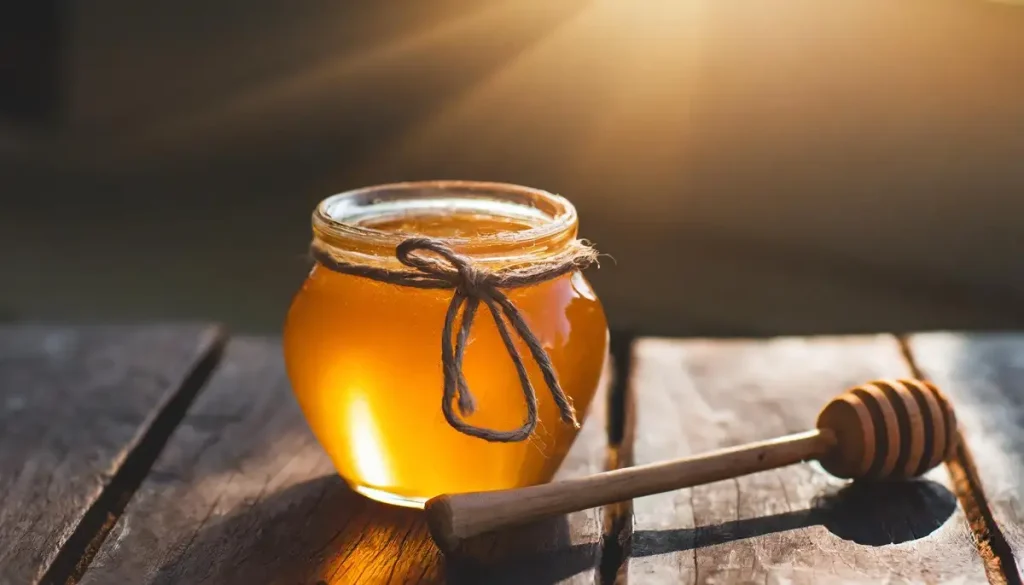Table of Contents
Beyond its traditional image as a simple sweetener, honey has blossomed into a captivating sensory experience enjoyed by a growing community of aficionados. While it has long held a sweet spot in the hearts of Winnie-the-Pooh and nature’s busy pollinators, honey now occupies an increasingly prominent position in the world of gourmet cuisine. This article delves into the fascinating world of honey tasting and appreciation, unveiling the intricate interplay of flavors and aromas that lies within this ancient, amber treasure. Together we’ll explore the world of honey tasting, offering insights into the amber nectar’s unique characteristics and origins. From practical tasting techniques to captivating anecdotes and a peek into the realm of dedicated honey connoisseurs, this article aims to be an informative and engaging guide for anyone curious to deepen their understanding and appreciation of this versatile elixir. Prepare to embark on a sensory journey that will leave your taste buds buzzing and forever alter your perception of honey.
Key Takeaways
- Honey tasting process: To taste honey, use a clean spoon, a glass of water, and a neutral-flavored cracker or bread. Evaluate honey’s flavor and aroma through a series of steps.
- Sensory characteristics: Evaluate honey’s color and clarity, aroma and fragrance, sweetness and flavor, texture and mouthfeel, and aftertaste and finish.
- Types of honey: The article provides a table of popular honey types, showcasing their characteristics in terms of color, aroma, flavor, and texture.
- Role of nectar sources: Nectar sources impact honey’s taste, aroma, and color, with different flowers producing nectar with distinct compositions that influence the final product.
- Role of bee species: Different bee species, such as Apis mellifera (Western Honey Bee) and Meliponines (Stingless Bees), can impact honey’s sensory characteristics due to their unique foraging behavior, flower preferences, and nectar processing methods.
- Honey processing techniques: Raw and pasteurized honey processing methods can affect the sensory characteristics of the final product, including taste, aroma, texture, and color.
- Role of terroir: Terroir refers to the unique combination of natural factors, such as climate, soil, and regional flora, that influence the taste and aroma of honey. Terroir is significant in honey production because it directly affects the nectar sources available to bees.
- Off-flavors in honey can arise from improper storage, processing, or contamination. These include fermented, yeasty, caramelized, burnt, musty, moldy, chemical, or metallic flavors.
- To detect off-flavors, pay close attention to honey’s aroma and taste. To avoid off-flavors, store honey in a cool, dry place in a non-reactive container and always use clean utensils.
- Honey offers numerous benefits beyond taste, such as nutritional, medicinal, skincare, and cooking applications.
- Guided honey tasting events provide an enriching and educational experience, allowing participants to better understand and appreciate the nuances in honey flavors and aromas.
- Building a personal honey flavor preference involves exploring a diverse selection of honey varieties, experimenting with honey pairings, attending honey tasting events, and keeping a honey tasting journal.
Honey Tasting Basics
First, let’s go over the honey tasting process and the tools you’ll need. To taste honey, you’ll need a clean spoon, a glass of water, and a neutral-flavored cracker or bread. Here are the steps to evaluate honey flavor and aroma:
- Take a small amount of honey on the spoon.
- Hold the spoon under your nose and inhale deeply to capture the aroma.
- Take a sip of the honey and let it spread across your tongue.
- Close your mouth and breathe through your nose to capture the flavor and aroma.
- Swallow the honey and evaluate the aftertaste and finish.
- Clean your palate with water and a neutral-flavored cracker or bread.
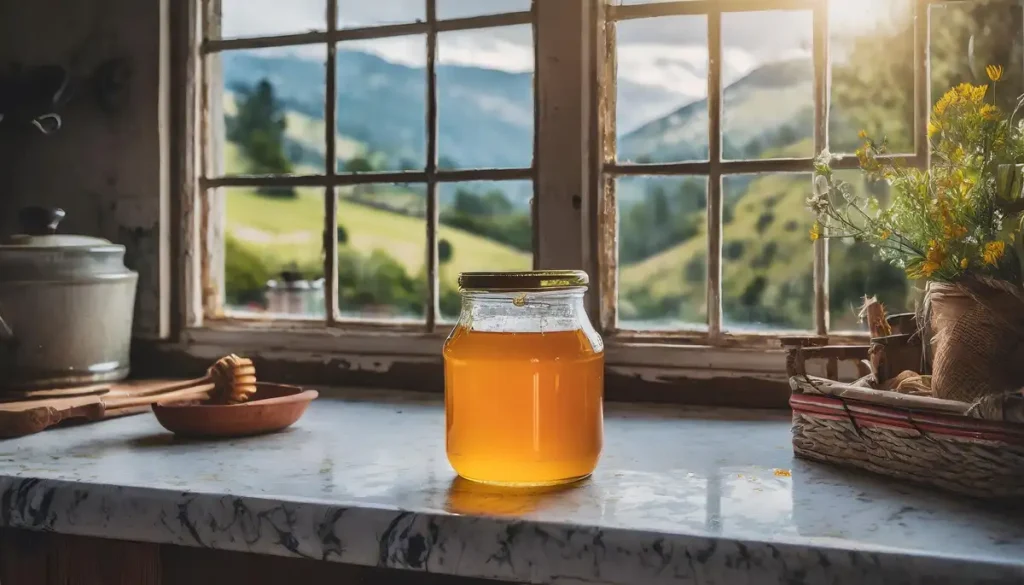
Sensory Characteristics of Honey
Now let’s discuss the sensory characteristics of honey. When tasting honey, you should evaluate its color and clarity, aroma and fragrance, sweetness and flavor, texture and mouthfeel, and aftertaste and finish.
- Color and Clarity: Honey can range in color from light amber to dark brown, and in clarity from clear to opaque.
- Aroma and Fragrance: Honey can have a variety of aromas and fragrances, depending on the type of flower the bees collected nectar from.
- Sweetness and Flavor: Honey can have a range of flavors, from floral to fruity to earthy, and levels of sweetness.
- Texture and Mouthfeel: Honey can have a range of textures, from thick and creamy to thin and runny, and a variety of mouthfeel sensations.
- Aftertaste and Finish: The aftertaste and finish of honey can range from lingering sweetness to a slightly bitter or sour taste.
Types of Honey and their Sensory Characteristics
Here is a detailed table on various types of honey and their sensory characteristics.
The headers I’ve chosen to include provide a comprehensive overview of each honey’s unique sensory qualities.
| Type of Honey | Color | Flavor Profile | Aroma | Texture |
|---|---|---|---|---|
| Acacia | Light, Clear | Mild, Sweet, Floral | Light, Delicate Floral | Smooth, Liquid |
| Buckwheat | Dark Amber | Strong, Molasses-like, Earthy | Robust, Malty | Thick, Robust |
| Clover | Light to Medium | Sweet, Mild with hints of Grass | Pleasant, Mildly Floral | Smooth, Creamy |
| Manuka | Dark Cream to Brown | Rich, Earthy, Herbaceous | Strong, Woody, Earthy | Thick, Gel-like |
| Orange Blossom | Light Amber | Sweet, Fruity with a hint of Citrus | Fresh, Floral, Slightly Citrusy | Smooth, Viscous |
| Eucalyptus | Medium Amber | Bold, Slightly Minty, Woody | Distinct, Herbaceous | Viscous |
| Heather | Amber to Dark | Strong, Woody, Slightly Bitter | Pungent, Woody | Jelly-like |
| Lavender | Light to Medium Amber | Floral, Slightly Spicy | Lavender, Floral | Smooth, Fluid |
| Wildflower | Varies | Complex, Varies with the flowers visited | Varies, Generally Floral | Varies |
| Chestnut | Dark Amber | Unique, Slightly Bitter, Astringent | Strong, Pungent | Thick, Less Sweet |
| Tupelo | Light Amber | Very Sweet, Buttery, with a Vanilla Note | Floral, Fruity | Smooth, Silky |
| Sage | Light to Medium | Delicate, Lightly Sweet, Floral | Mild, Pleasant | Fine, Crystalline Slowly |
| Fireweed | Light Amber | Delicate, Sweet, with a Tea-like aftertaste | Subtle, Herbal | Smooth, Creamy |
| Sourwood | Light to Medium | Complex, Rich Honey flavor with a hint of Aniseed | Spicy, Woody | Thick, Velvety |
This table covers a wide range of honey types, from the very mild and delicate Acacia honey, known for its light color and smooth texture, to the dark and robust Buckwheat honey, recognized for its strong flavor and thick texture. Each type of honey has unique sensory characteristics that make it suitable for different uses, from culinary applications to medicinal purposes. The color, flavor profile, aroma, and texture of honey can vary significantly depending on the flowers the bees have foraged, the region it comes from, and the processing methods used by beekeepers.
Honey’s diversity extends globally, with regional varietals offering unique tastes and health benefits. For example, Manuka honey from New Zealand is renowned for its exceptional antibacterial properties, while Sidr honey from Yemen is prized for its rich taste and nutritional profile. Exploring these regional varietals can provide a fascinating glimpse into the world’s diverse honey landscape.
The Role of Nectar Sources in Honey Flavor Profiles
The role of nectar sources in honey flavor profiles is a key aspect of understanding the diverse range of tastes, aromas, and colors that different types of honey exhibit. Nectar, which is collected by bees from the flowers of various plants, is the primary ingredient in honey production. It serves as the foundation for honey’s unique flavor profile, as the specific characteristics of the nectar source directly impact the sensory attributes of the final product.
Different flowers produce nectar with distinct compositions, which in turn influence the taste and aroma of the honey produced. For example, lavender honey is derived from the nectar of lavender flowers and tends to have a floral and herbal aroma, with a sweet and delicate flavor. On the other hand, buckwheat honey, which originates from the nectar of buckwheat flowers, possesses an earthy and nutty aroma, accompanied by a robust and strong taste. The color of honey also varies based on the nectar source, with some honeys appearing light and golden, while others adopt a darker amber hue.
The uniqueness of honey’s sensory characteristics, driven by the variety of nectar sources, offers a fascinating exploration for honey enthusiasts and tasters alike. Experimenting with honeys derived from different flowers allows tasters to develop an appreciation for the vast spectrum of flavors and aromas available. Understanding the influence of nectar sources on honey’s flavor profile not only enhances the tasting experience but also provides valuable insights into the relationship between nature and the delightful complexities of honey.
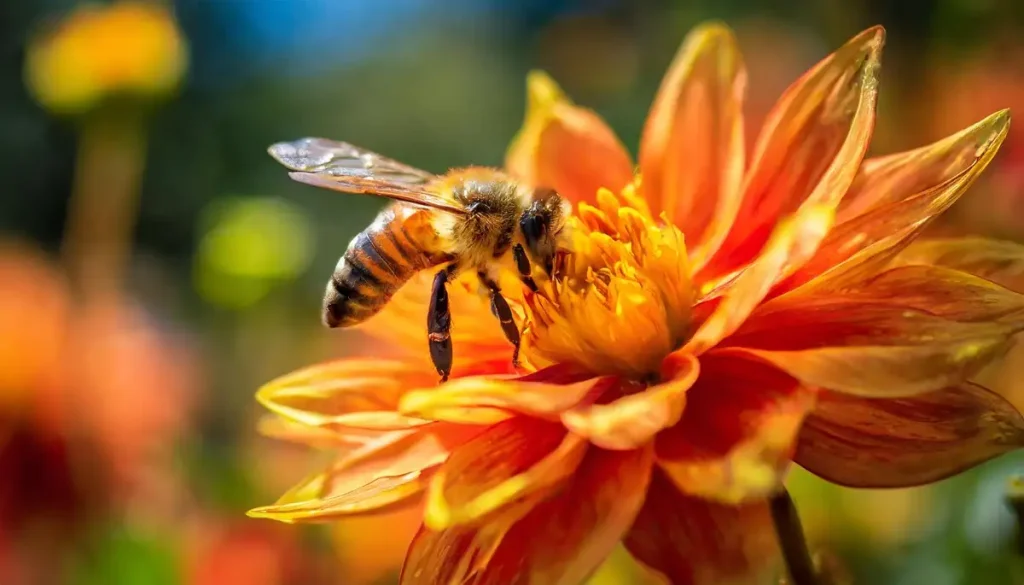
The Role of Bee Species and Their Impact on Honey
When discussing honey, it’s essential to consider the role of bee species in determining its taste and other sensory characteristics. Different species of bees can have a significant impact on the final product as each species has its unique foraging behavior, preferences for certain flowers, and methods of processing nectar into honey. Understanding the relationship between bee species and honey production can help explain why specific species are preferred for certain types of honey and how these species contribute to the sensory characteristics of the final product.
Apis mellifera: The Western Honey Bee
The Western honey bee (Apis mellifera) is the most common species used in commercial honey production worldwide. This bee species is known for its adaptability, efficient foraging behavior, and ability to produce large quantities of honey. Their broad preference for various flowers enables them to produce diverse honey flavors and aromas, making them a popular choice for beekeepers.
Stingless Bees: Meliponines and Their Unique Honey
Stingless bees, belonging to the Meliponini tribe, are another group of bees that produce honey, often referred to as “meliponine honey” or “pot honey.” These bees are native to tropical and subtropical regions and produce honey with distinct sensory characteristics compared to Apis mellifera honey. Meliponine honey is typically thinner and runnier, with a higher water content and unique flavors that are influenced by the bees’ specific foraging preferences.
- Carter, Anthony (Author)
- English (Publication Language)
- 194 Pages - 02/28/2024 (Publication Date) - Independently published (Publisher)
Here is a table on the role of different bee species and their impact on honey:
| Bee Species | Geographical Distribution | Honey Characteristics | Production Capacity | Ecological Impact |
|---|---|---|---|---|
| Apis mellifera (Western Honey Bee) | Worldwide, especially temperate and tropical climates | Varied; depends on the flowers visited. Generally light to dark golden. | High; up to 150 kg per year in managed hives. | Crucial for pollination of commercial crops and wild plants. |
| Apis cerana (Asian Honey Bee) | Asia, primarily in forested and mountainous regions | Mildly sweet, with a distinct floral aroma. Lighter color. | Moderate; around 20-60 kg per year per hive. | Important for local ecosystems’ pollination and agricultural productivity. |
| Apis dorsata (Giant Honey Bee) | South and Southeast Asia, in forests and rural areas | Rich, strong flavor with a slightly bitter aftertaste. Dark in color. | Low to moderate; can collect significant amounts but less likely to be harvested due to their nesting habits. | Pollinates wild plants and crops; vulnerable due to habitat destruction. |
| Apis florea (Dwarf Honey Bee) | Middle East, South and Southeast Asia | Sweet, with high water content. Light and clear. | Low; small colonies produce significantly less honey. | Pollinates small flowers; its nomadic nature affects local plant pollination. |
| Melipona spp. (Stingless Bees) | Tropical regions of the Americas, Africa, Australia, and Southeast Asia | Unique, often with a tangy taste and thin consistency. Varied colors. | Very low; ranging from 0.5 to 1.5 kg per year per hive. | Essential for the pollination of tropical forest plants, some of which are adapted specifically to stingless bee pollination. |
Notes:
- Geographical Distribution indicates where these species are predominantly found. Some species like Apis mellifera have been introduced globally due to their importance in agriculture.
- Honey Characteristics vary significantly even within species, largely depending on the floral sources available in their foraging area.
- Production Capacity is a rough estimate and can vary based on numerous factors, including the local environment, hive management practices, and the health of the bee colony.
- Ecological Impact emphasizes the role of each bee species in their native ecosystems, particularly regarding pollination, which is critical for the reproduction of many wild and cultivated plants.
This table underscores the diversity among bee species and their unique contributions to honey production and ecological health. Each species plays a specific role in its environment, impacting both the characteristics of the honey produced and the broader ecological balance.
The Impact of Bee Species on Honey Characteristics
Different bee species can impact honey’s sensory characteristics by their foraging preferences and the way they process nectar. Some species may prefer certain types of flowers, leading to distinct flavor profiles in the honey they produce. Additionally, the enzymes and processing techniques that each species use to convert nectar into honey can further influence the final product’s taste, aroma, and texture.
Understanding the role of bee species in honey production allows for a deeper appreciation of the diverse flavors and characteristics of honey. It also highlights the importance of supporting various bee species and their habitats to ensure the continued production of unique and high-quality honey varieties.
Beyond their role in producing honey, bees play a crucial role in pollinating plants, contributing to the health of ecosystems and the production of fruits, vegetables, and nuts. Supporting bee populations and their habitats is essential not only for honey production but also for maintaining biodiversity and ensuring food security.
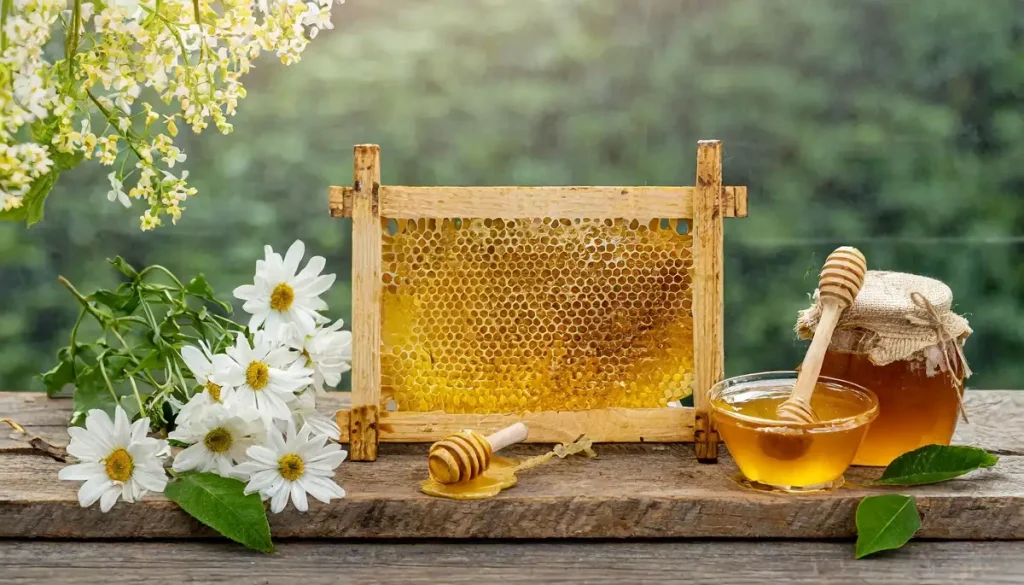
The Impact of Honey Processing Techniques
Various honey processing methods can significantly affect the sensory characteristics of the final product, including its taste, aroma, texture, and color. Two main processing techniques often discussed in the world of honey are raw and pasteurized honey. Understanding the differences between these methods and their impact on the overall honey tasting experience is essential for honey enthusiasts and those looking to delve deeper into the nuances of honey.
Raw Honey
Raw honey is honey in its purest form, taken directly from the honeycomb and strained to remove any wax, propolis, or debris. This minimal processing retains the honey’s natural enzymes, pollen, and other beneficial compounds that contribute to its unique sensory characteristics. Raw honey often has a more complex flavor profile and a richer aroma as well as a higher nutritional value due to the preserved enzymes and nutrients. However, raw honey can also vary greatly in consistency, from crystallized to runny, depending on factors such as the nectar source and storage conditions.
Pasteurized Honey
Pasteurized honey, on the other hand, undergoes a heat treatment process to kill any potential pathogens and extend its shelf life. This process involves heating the honey to high temperatures, often around 160°F (71°C), for a specific period, followed by rapid cooling. While pasteurization can help create a smoother, more uniform texture and appearance, it can also lead to a loss of delicate flavors, aromas, and beneficial compounds found in raw honey. As a result, pasteurized honey tends to have a milder taste and a less complex aroma compared to its raw counterpart.
The choice between raw and pasteurized honey often comes down to personal preferences and priorities, such as taste, aroma, texture, and nutritional value. Experimenting with different processing techniques and their respective sensory characteristics can help individuals develop a deeper appreciation for the art of honey tasting and the factors that contribute to the unique qualities of this natural sweetener.
Filtered Honey
Beyond raw and pasteurized honey, filtered honey represents another category, where honey is strained to remove fine particles, pollen grains, and air bubbles. While filtering improves clarity and extends shelf life, it may also remove beneficial nutrients and pollen, which contribute to honey’s unique flavor and health benefits. Understanding these processing techniques can help consumers make informed choices based on their preferences for flavor, texture, and nutritional value.
The Role of Terroir in Honey Production
Terroir is a French term that refers to the unique combination of natural factors, such as climate, soil, and regional flora, that influence the taste and aroma of agricultural products like wine, coffee, and honey. In the context of honey production, terroir is particularly significant because the sensory characteristics of honey are directly linked to the nectar sources available to bees in their surrounding environment. As bees forage for nectar from various flowering plants, they collect and transfer the unique flavors and aromas of those plants to the honey they produce.
Climate, Soil, and Regional Flora: Key Factors in Honey Terroir
Climate plays a crucial role in determining the types of plants that can grow in a given region, as well as the timing and duration of their flowering periods. This, in turn, affects the nectar sources available to bees and the sensory characteristics of the honey they produce. For example, honey from a region with a warm, Mediterranean climate may have a different flavor profile compared to honey from a cooler, temperate region.
Soil composition is another important aspect of terroir, as it influences the types of plants that can thrive in a particular area. Different soil types can affect the nutritional content and taste of the nectar produced by flowering plants, which ultimately shapes the honey’s flavor and aroma. For instance, honey made from nectar collected in areas with rich, volcanic soil may exhibit a more robust and complex flavor profile compared to honey from areas with sandy or clay-based soil.
Regional flora, or the specific plant species found in a particular area, is perhaps the most obvious factor in honey terroir. The diverse range of flowering plants available to bees directly impacts the sensory characteristics of the honey they produce. In regions with a high concentration of specific plant species, such as lavender or eucalyptus, the honey produced will have distinct flavors and aromas associated with those plants. As a result, the regional flora contributes to the creation of unique, location-specific honey varieties.
Identifying Common Off-Flavors in Honey
Honey is a natural and flavorful product, but sometimes it can develop off-flavors due to improper storage, processing, or contamination. Being able to identify these off-flavors is essential for an enjoyable honey tasting experience and ensuring the quality of the honey you consume. In this section, I’ll provide an overview of common off-flavors in honey and offer tips on how to detect and avoid them.
Off-Flavors Due to Storage and Processing
Honey can develop off-flavors if it’s stored inappropriately or exposed to high temperatures during processing. Some common off-flavors that can arise from these factors include:
- Fermented or yeasty flavors: Honey can ferment if it’s stored in a warm or humid environment, which can lead to the growth of yeast and the development of a distinct fermented or yeasty taste. Honey’s susceptibility to fermentation is primarily due to its water content. Natural yeasts present in the environment can activate if the honey’s moisture content exceeds 18%, leading to fermentation. To preserve the quality and taste of honey, it’s essential to store it in an environment that maintains its natural low moisture content.
- Caramelized or burnt flavors: If honey is exposed to high temperatures during processing, it can develop a caramelized or burnt taste. This is often a result of over-pasteurization or over-heating of the honey.
Off-Flavors Due to Contamination
Contamination can also lead to off-flavors in honey. Some examples of contamination-related off-flavors are:
- Musty or moldy flavors: If honey comes into contact with mold or mildew, it can develop a musty or moldy taste. This can occur if honey is stored in a damp environment or if it’s contaminated by unclean equipment or containers.
- Chemical or metallic flavors: Honey can absorb chemical or metallic tastes if it’s stored in containers made of reactive materials, such as certain types of plastic or metal. This can alter the honey’s taste and make it less enjoyable.
Detecting and Avoiding Off-Flavors in Honey
To detect off-flavors in honey, pay close attention to its aroma and taste during the honey tasting process. If you notice any unusual or unpleasant flavors, it’s likely that the honey has been affected by one of the factors mentioned above.
To avoid off-flavors in honey, ensure that it’s stored in a cool, dry place away from direct sunlight and in a non-reactive container, such as glass. Additionally, make sure to use clean utensils when scooping honey and always check for signs of spoilage or contamination before consuming it. By following these simple guidelines, you can enjoy honey tasting with confidence and savor the unique and delightful flavors that each type of honey has to offer.
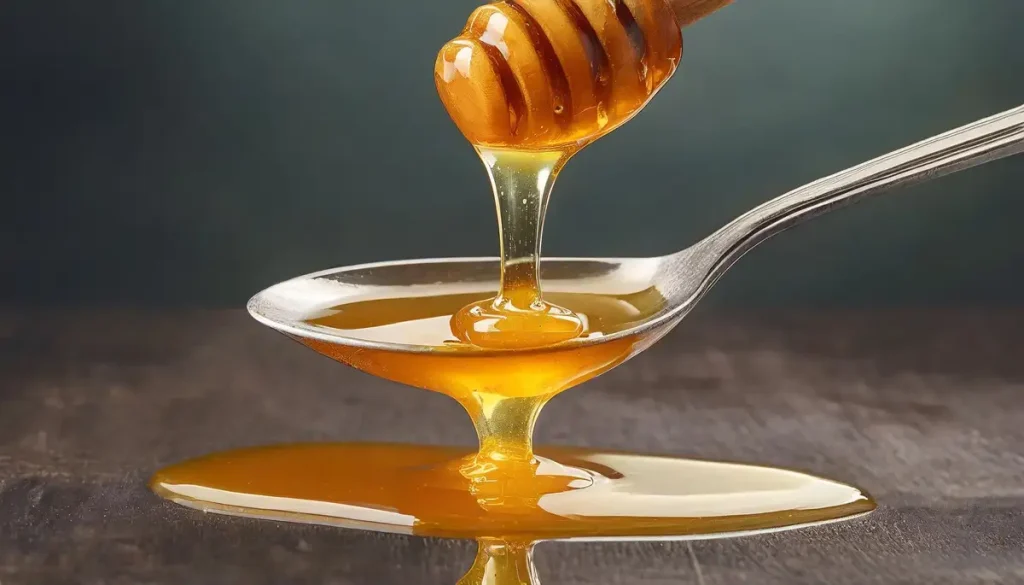
The Benefits of Honey Beyond Taste
Honey is well-known for its delightful sweetness and versatile flavor profiles, but its appeal goes far beyond taste. This golden nectar offers a host of nutritional, medicinal, and practical benefits that make it a valuable addition to any pantry.
In addition to its sweetness, honey is a source of natural energy and contains trace amounts of vitamins and minerals, including B vitamins, iron, and potassium, which play vital roles in our health. Honey also acts as a prebiotic, supporting the growth of beneficial bacteria in the gut, contributing to overall gut health. These nutritional properties, combined with its antioxidants, reinforce honey’s role as a beneficial addition to a healthy diet.
Nutritional and Medicinal Benefits
Honey is a natural source of energy, providing a quick boost when needed, thanks to its high sugar content. It also contains trace amounts of vitamins, minerals, and antioxidants, which contribute to its overall health benefits. Honey has long been used for its antimicrobial properties, making it a popular choice for treating wounds and burns. Additionally, it has been shown to possess anti-inflammatory and soothing effects, which can help alleviate coughs, sore throats, and other respiratory issues.
Skincare Applications
Honey’s natural moisturizing and antibacterial properties make it a popular ingredient in skincare products. It can be used as a natural face mask, providing hydration and a gentle exfoliation to the skin, while also reducing redness and inflammation. Moreover, honey’s ability to attract and retain moisture makes it an effective treatment for dry, cracked skin and chapped lips.
Cooking and Natural Remedies
In cooking, honey serves as a versatile sweetener that can be used in a variety of dishes, from baked goods to salad dressings and marinades. Its unique flavor profiles can add depth and dimension to a wide range of recipes, while also providing a more natural alternative to processed sugars. As a natural remedy, honey can be used to soothe digestive issues, such as indigestion and stomach ulcers, thanks to its mild anti-inflammatory properties. It is also a popular choice for natural allergy relief as local honey can help build immunity to regional pollen.
Honey’s versatility and numerous benefits extend far beyond its role as a delicious and flavorful sweetener. By exploring the many uses of honey in nutrition, medicine, skincare, and cooking, you can gain a deeper appreciation for this natural wonder and enjoy its myriad advantages.
Guided Honey Tasting Techniques
A guided honey tasting event can provide an enriching and educational experience, enabling participants to better understand and appreciate the nuances in honey flavors and aromas. Guided tastings often involve an expert or experienced taster who can share insights into the various sensory characteristics of honey, helping attendees identify and distinguish the subtleties of different honey types. By participating in a guided tasting, individuals can develop their palate and expand their knowledge of honey’s diverse and complex flavor profiles.
Conducting a Successful Guided Honey Tasting Event
To organize a successful guided honey tasting event, consider the following suggestions:
1. Select a Diverse Honey Line-Up
Choose a variety of honey types that showcase different sensory characteristics, such as color, aroma, flavor, and texture. This will allow participants to compare and contrast various types of honey and better understand the role of nectar sources, bee species, and terroir in honey production.
2. Provide Tasting Materials
Offer tasting sheets or note cards for participants to record their observations and impressions. Providing pens or pencils, as well as a honey flavor wheel or reference chart, can help guide attendees in describing and evaluating the honey they taste.
3. Set Up a Proper Tasting Environment
Arrange a comfortable and well-lit space with adequate seating for all participants. Ensure that the tasting area is free from strong odors or distractions that could interfere with the participants’ ability to focus on the honey’s sensory characteristics.
4. Engage an Expert or Experienced Taster
Invite a knowledgeable honey expert or experienced taster to lead the event, offering insights into the honey varieties, production methods, and sensory characteristics. This individual can also guide participants in proper tasting techniques, helping them better appreciate the nuances in honey flavors and aromas.
5. Encourage Discussion and Interaction
Allow time for participants to share their thoughts, impressions, and questions throughout the tasting event. This encourages active engagement and fosters a collaborative learning atmosphere, promoting a deeper understanding and appreciation of the diverse world of honey.
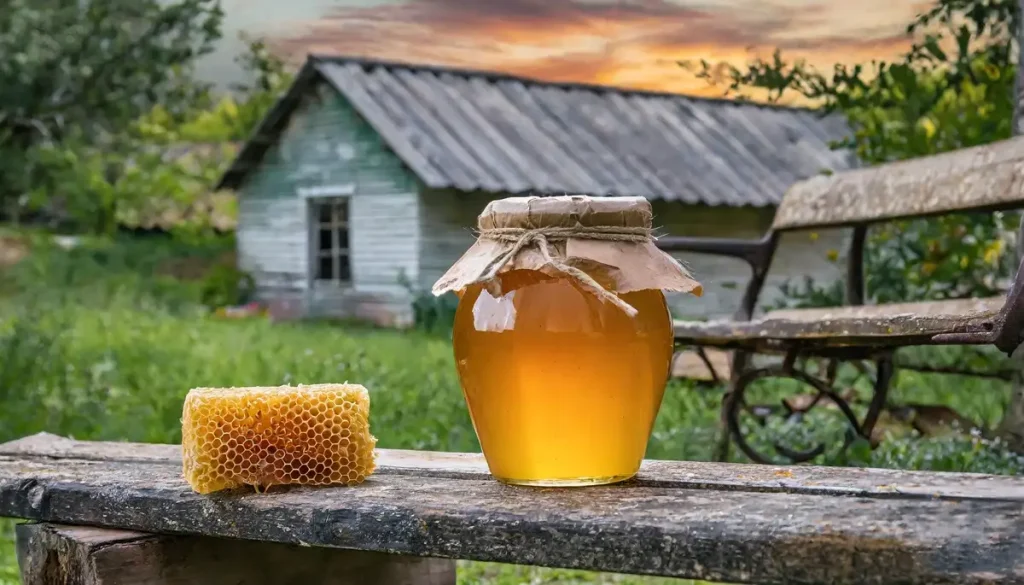
Building a Personal Honey Flavor Preference
One of the most exciting aspects of honey tasting is discovering the vast array of flavors and characteristics that different types of honey can offer. To build your personal honey flavor preference, start by exploring a diverse selection of honey varieties, from light and delicate acacia honey to robust and earthy buckwheat honey. Sampling various honeys allows you to gain a better understanding of your taste preferences and develop a deeper appreciation for the nuances in honey flavors and aromas.
Experimenting with Honey Pairings and Uses
Beyond simply tasting honey on its own, you can also experiment with different honey pairings and uses to further refine your preferences. Try drizzling honey over different types of cheese, fruits, or yogurt to see how the flavors interact and complement each other. You can also incorporate honey into various recipes, such as salad dressings, marinades, or baked goods, to explore how honey enhances the flavors and textures of your favorite dishes.
Attending Honey Tasting Events and Workshops
Another way to build your personal honey flavor preference is by attending honey tasting events and workshops. These events often feature guided tastings led by experts who can help you identify subtle flavor notes and sensory characteristics in different types of honey. Additionally, attending such events allows you to engage with fellow honey enthusiasts, exchange ideas and opinions, and broaden your knowledge of honey and its diverse applications.
Keeping a Honey Tasting Journal
Finally, consider keeping a honey tasting journal to document your experiences and discoveries as you explore different honey varieties and pairings. By recording your thoughts on each honey’s color, aroma, flavor, texture, and mouthfeel, you’ll develop a more refined understanding of your personal preferences and gain valuable insights into the characteristics that make each honey unique. Over time, your honey tasting journal will serve as a valuable resource for identifying your favorite honeys and guiding your future honey tasting adventures.
Such a journal should include details such as the date, variety of honey, visual appearance (color and clarity), aroma, flavor notes, texture, and your personal rating. Additionally, note the context of your tasting, such as the time of day and any foods paired with the honey. This practice will refine your palate, deepen your appreciation for honey, and help you discover your favorite varieties.
Honey Tasting Events and Competitions
Although touched upon above, in this section I’ll go into a bit more detail. Attending honey tasting events and competitions can be a fun and educational way to try different types of honey and learn about their sensory characteristics. In addition, participating in honey tasting events can provide an opportunity to meet other beekeepers and honey enthusiasts, and learn about the latest trends and practices in the industry. If you’re interested in hosting a honey tasting event, here are some tips:
- Choose a variety of honey types to taste
- Provide tasting sheets and pens for participants to record their observations
- Offer small snacks to cleanse the palate between tastings
- Consider having a guest speaker or expert to share information about the different types of honey and their sensory characteristics
- Provide prizes for the winners of the tasting competition
Pairing Honey with Food and Beverages
Honey can be paired with a wide range of foods and beverages, from cheese and fruit to tea and cocktails. When pairing honey with food, it’s important to consider the flavor and aroma of the honey and how it complements or contrasts with the flavors of the food. Here are some guidelines for pairing honey with different types of food and beverages:
- Cheese: Pair light-colored honey with mild cheese, and dark-colored honey with strong cheese
- Fruit: Pair honey with fruit that has a similar flavor profile
- Tea: Pair light-colored honey with delicate tea, and dark-colored honey with strong tea
- Cocktails: Pair honey with spirits and mixers that complement the flavor and aroma of the honey.
Honey Tasting – Conclusion
Honey tasting is a fun and rewarding way to explore the sensory characteristics of different types of honey. Whether you’re a beekeeper, honey enthusiast, or just curious about honey, I hope this guide has provided you with the information and tools you need to enjoy honey tasting to the fullest. Remember, tasting honey is a personal experience, and everyone’s palate is unique, so don’t be afraid to experiment and explore different types of honey to find your favorites.
Last update on 2024-04-17 / Affiliate links / Images from Amazon Product Advertising API

